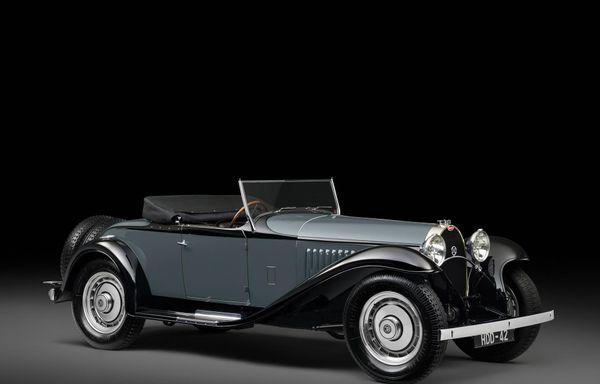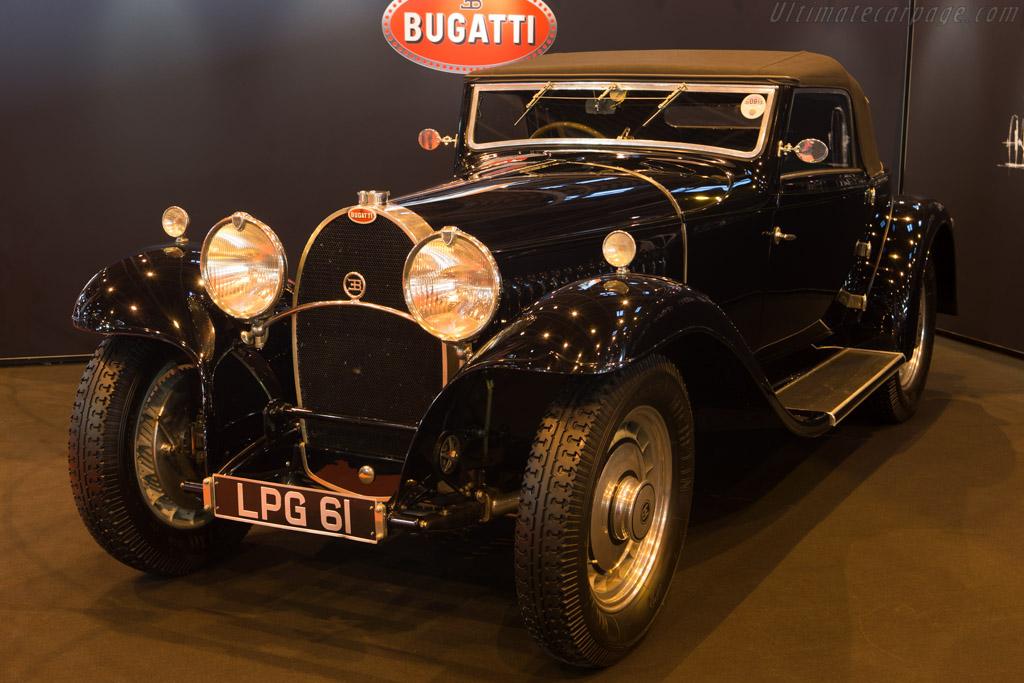1931 Bugatti Type 50 Roadster

The descriptions of the Classic Cars in the Directory were partly generated or supplemented with the help of artificial intelligence (AI). The content may occasionally not always be entirely accurate or factually correct despite careful checking.
The Bugatti Type 50 Roadster 1931 is a stunning piece of automotive history. Boasting a 4.9-liter inline eight-cylinder engine, this car has a top speed of 115 miles per hour and can go from zero to 60 miles per hour in just 12 seconds. This impressive performance is made possible by the car's advanced engineering and design, which includes a four-speed manual transmission, independent suspension, and hydraulic brakes.
One of the most notable technical features of the Bugatti Type 50 Roadster 1931 is its suspension system. The car uses a unique design that includes four individually mounted wheels that are suspended using semi-elliptical leaf springs. This design was highly innovative for its time and provided a smoother and more stable ride than many of its contemporaries.
Additional technical features of the Bugatti Type 50 Roadster 1931 include its advanced hydraulic brakes, which were considered cutting-edge technology for their time. This system made use of four-wheel drums, and the brakes were actuated by a hydraulic system that provided consistent and reliable stopping power. This made the car much safer and easier to drive, even at high speeds.
Under the hood, the Type 50 Roadster was powered by a large eight-cylinder engine. This power plant featured a number of advanced design features, including a dual overhead camshaft, a cross-flow cylinder head, and wet sump lubrication. These features helped to maximize the engine's power output while also making it more reliable and easier to maintain.
In addition to its impressive mechanical features, the Bugatti Type 50 Roadster 1931 was also renowned for its sleek and stylish design. With a long, flowing hood, sweeping fenders, and a low, aerodynamic profile, the car exuded luxury and performance. The interior was also carefully crafted, with leather upholstery, a polished dashboard, and a number of high-end features like a speedometer, tachometer, and oil pressure gauge.
Overall, the Bugatti Type 50 Roadster 1931 is a true masterpiece of automotive engineering and design. Its advanced technical features, stylish design, and impressive performance made it a favorite of car enthusiasts around the world, and it remains an icon of the golden age of automobiles. Whether you're a collector or simply an automotive enthusiast, this car is sure to impress with its incredible attention to detail and precise engineering.
Milestones
- The Bugatti Type 50 Roadster was first introduced in 1931. - It was powered by a 5.0-liter inline-eight engine capable of producing 225 horsepower. - The car featured a lightweight, aerodynamic body designed by Jean Bugatti. - It had a top speed of approximately 100 mph and could accelerate from 0 to 60 mph in 13 seconds. - The Type 50 Roadster was equipped with a four-speed manual transmission and hydraulic brakes. - Only 65 Type 50 Roadster models were ever produced, making it one of the rarest Bugatti models. - In 1932, a Type 50 Roadster won the Monte Carlo Rally, solidifying its status as a high-performance vehicle. - In 2010, a Bugatti Type 50 Roadster sold at auction for over $4 million, highlighting its significance as a rare and valuable classic car.Technical
• Engine: 4.9L DOHC inline-eight • Power output: 225 hp at 4,500 rpm • Transmission: Four-speed manual • Suspension: Semi-elliptic leaf springs on front and rear beam axles • Brakes: Four-wheel hydraulic drum brakes • Dimensions: Wheelbase: 3,300 mm (130 in), Length: 4,500 mm (177 in), Width: 1,620 mm (64 in), Height: 1,480 mm (58 in) • Weight: 1,400 kg (3,100 lb) • Top speed: 100 mph (160 km/h) • Production years: 1931-1934 • Total production: 65 units • Rare roadster variant with coachwork by Gangloff • Notable owners include Hugh Conway, King Leopold III of Belgium, and Ralph Lauren.


